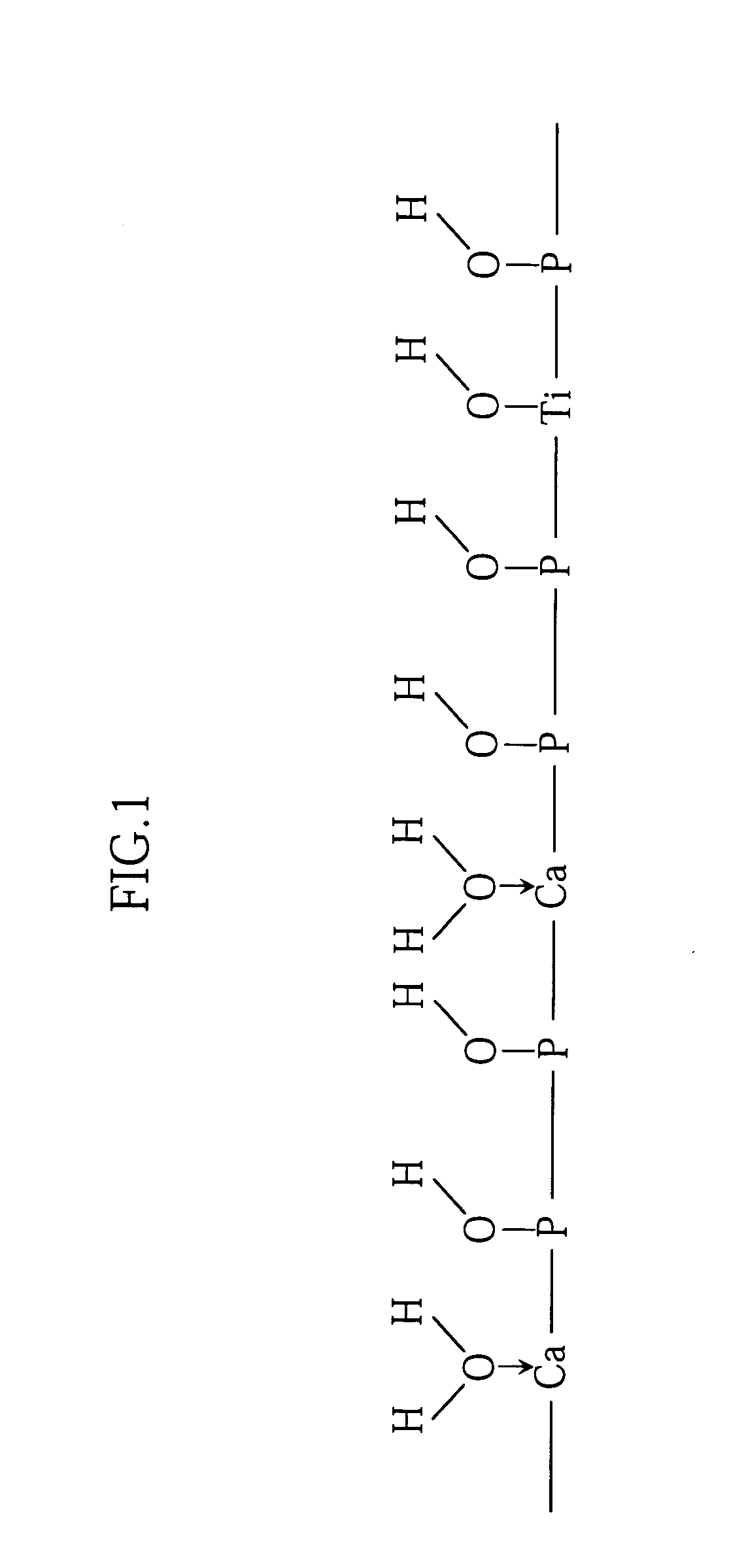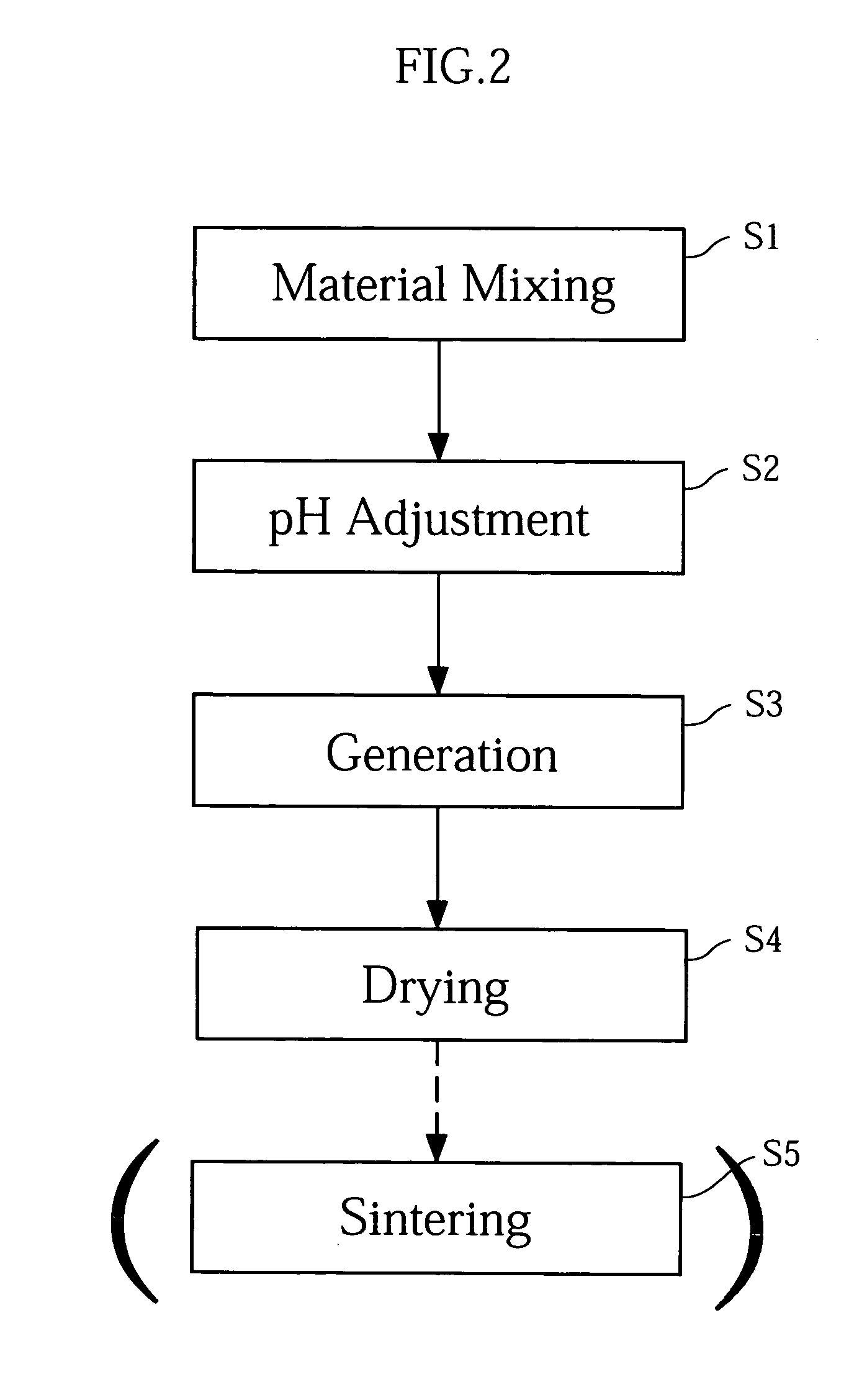Method for preserving food using metal-modified apatite and food container used therein
a technology of metal-modified apatite and food container, which is applied in the direction of meat/fish preservation using inorganic salts, packaging, and using chemicals, etc. it can solve the problems of insufficient prevention of food putrefaction or food poisoning, insufficient use of disinfectant, and inability to prevent food contamination in the environment. , to achieve the effect of improving the catalytic effect of metal-modified apatite and enhancing the antibacterial
- Summary
- Abstract
- Description
- Claims
- Application Information
AI Technical Summary
Benefits of technology
Problems solved by technology
Method used
Image
Examples
example 1
[0046] (Preparation of Metal-Modified Apatite)
[0047] In this example, Ti-CaHAP was prepared as a metal-modified apatite. Specifically, 1 L of pure water having undergone decarboxylation was prepared, and calcium nitrate, titanium sulfate and phosphoric acid were added into the pure water and mixed. The concentration of calcium nitrate was 0.09 mol / L, the concentration of titanium sulfate was 0.01 mol / L, and the concentration of phosphoric acid was 0.06 mol / L. Subsequently, 15 mol / L of ammonia water was added to adjust the pH of the material solution to 9.0. The material solution was then subjected to aging at 100° C. for six hours. Through the above process, the generation and deposition of the metal-modified apatite proceeded in the material solution, whereby the material solution changed to a suspension. After the suspension was filtrated, the separated precipitate was washed with 5 L of pure water and then dried in a dry oven at 70° C. for 12 hours. In this way, minute particles...
example 2
[0050] A coating containing metal-modified apatite was formed on a 50×50 mm glass plate in the same manner as in Example 1 by using minute particles of the same metal-modified apatite as that of Example 1. With respect to the coating containing the metal-modified apatite, the antibacterial effect was checked in the same manner as in Example 1, except that the glass plate was left in a dark place without performing ultraviolet irradiation. Based on the plot in which the abscissa represents elapsed time whereas the ordinate represents the survival rate of Colon bacilli, the graph A2 shown in FIG. 3 was obtained.
example 3
[0051] Minute particles of the same metal-modified apatite as that of Example 1 was sintered at 650° C. for 30 minutes. By using this metal-modified apatite particles, a coating containing the metal-modified apatite was formed on a 50×50 mm glass plate in the same manner as in Example 1. With respect to the coating containing the metal-modified apatite, the antibacterial effect was checked in the same manner as in Example 1. Based on the plot in which the abscissa represents elapsed time whereas the ordinate represents the survival rate of Colon bacilli, the graph A3 shown in FIG. 3 was obtained.
PUM
| Property | Measurement | Unit |
|---|---|---|
| temperature | aaaaa | aaaaa |
| temperature | aaaaa | aaaaa |
| thickness | aaaaa | aaaaa |
Abstract
Description
Claims
Application Information
 Login to View More
Login to View More - R&D
- Intellectual Property
- Life Sciences
- Materials
- Tech Scout
- Unparalleled Data Quality
- Higher Quality Content
- 60% Fewer Hallucinations
Browse by: Latest US Patents, China's latest patents, Technical Efficacy Thesaurus, Application Domain, Technology Topic, Popular Technical Reports.
© 2025 PatSnap. All rights reserved.Legal|Privacy policy|Modern Slavery Act Transparency Statement|Sitemap|About US| Contact US: help@patsnap.com



